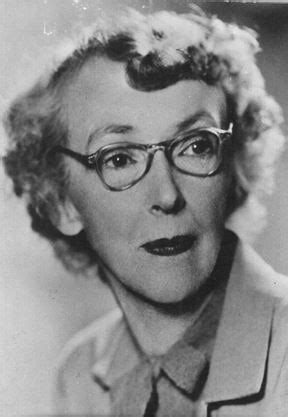This is the first of a two-part series on Mazo de la Roche, who is probably the least-known member of the Orillia Hall of Fame. Much thanks to Orillia Museum of Art & History (OMAH) History Committee member Trish Crowe-Grande, who explored the life of Mazo de la Roche and her Orillia connection, so that she can be given her due recognition. Watch for Part 2 tomorrow.
********************
Who is Mazo de la Roche?
When it comes to Canadian literary icons, Orillia is synonymous with Stephen Leacock, his summer home on Brewery Bay and his best-known novel, Sunshine Sketches of a Little Town.
However, there is another Canadian writer with an Orillia connection, one of the least known inductees into the Orillia Hall of Fame. That writer is Mazo de la Roche.
The Jalna series of novels, written by de la Roche, about the fictional Whiteoak family, who lived on an estate in southern Ontario between 1854-1954, was one of the most popular series of books of that time. Some might remember the popular television series, The Whiteoaks of Jalna, based on de la Roche’s books, released by the CBC in 1972.
To put her success as an author into perspective, by the time Mazo de la Roche died in 1961, the Jalna series had sold 11 million copies in 193 English-language editions and 92 foreign-language editions.
The only other Canadian female writer of Mazo’s time who enjoyed comparable success was Lucy Maud Montgomery, author of the Anne of Green Gable series. The only Canadian male writer who enjoyed comparable success up until that time was Stephen Leacock.
There have been biographies and articles written about de la Roche that excluded her life in Orillia.
Barrie author Heather Kirk, who has extensively researched de la Roche’s life, was the first de la Roche biographer to document the author’s connection to Orillia through her research carried out in the Simcoe County Archives, Orillia Museum of Art & History (OMAH) and the Orillia Public Library.
It was not until after her two books about de la Roche were published in 2006 and 2007 that Kirk, with OMAH volunteer, the late Don Jenkins, worked together to pinpoint where de la Roche had actually lived in Orillia.
Kirk outlined her subsequent research in the 2008 article “Mazo in Orillia: A Long and Winding Detective Story for Literary Historians.”
In 2018, Esmee Rees, de la Roche’s adopted daughter, donated a collection of her mother’s original publications including the Jalna series, as well as a few other personal mementos to OMAH. In light of this donation, her Orillia connection must have been meaningful to Mazo.
What was Mazo’s Connection to Orillia?
Mazo “Maisie” Louise Roche was born in Newmarket on Jan. 15, 1871, an only child who moved frequently due to her mother’s (Alberta Louise Lundy) chronic health issues and her father’s (William R. Roche) job as a travelling salesman.
While she had spent much of her life in the Toronto area, Mazo de la Roche – as she was known later in life to reflect her French ancestry – lived in Orillia between 1888 and 1891 and between 1892 and 1894. This is a substantial amount of time for a child between the impressionable ages of nine and 15.
Kirk’s research verified that Mazo’s maternal grandparents, Daniel and Louise Lundy, lived in Orillia from 1888 to 1894, moving from Newmarket after their son was killed in a workplace accident.
Daniel found employment at The Longford Manufacturing Company, known by the locals as the “Pail Factory.” In the past, de la Roche had visited her maternal grandparents regularly, as they were a welcoming couple and provided a comfortable place to live. In later years, the author reflected upon this time warmly.
So, in 1888, Mazo and her mother moved up to Orillia, staying with the Lundys, at 40 Coldwater Rd. (at the northeast corner of Albert and Coldwater streets) in a duplex structure owned by the Ironsides.
They lived with the Lundys from 1888 to 1890 and from 1892 to 1894. They also resided at 29 Albert St., then moved to today’s 82 Albert St.. Over those four years, de la Roche’s father would visit periodically between his multiple sales jobs.
Not only did young Mazo have the Lundy connection in Orillia, she also had a connection with the Clements. Martha Clement was the younger sister of Mazo’s grandmother. Due to financial difficulty, Martha Clement left her daughter Caroline with the Lundys prior to returning to her husband in the United States.
When reflecting on de la Roche’s life, her close relationship to Caroline Clement (her first cousin once removed), was significant. Caroline grew up with Mazo as they both lived with the Lundys during Caroline’s turbulent childhood, which saw her father James dealing with unsteady employment in Dakota Territory, where the family lived.
The Lundys raised Mazo and Caroline as sisters. Caroline’s parents and brother eventually moved to Orillia from the U.S. in 1889 and Caroline joined her family to live a few blocks from the Lundys. Mazo and Caroline embarked on a lifelong friendship.
Check back tomorrow for Part 2: Mazo de la Roche: Her Orillia connections explored.
